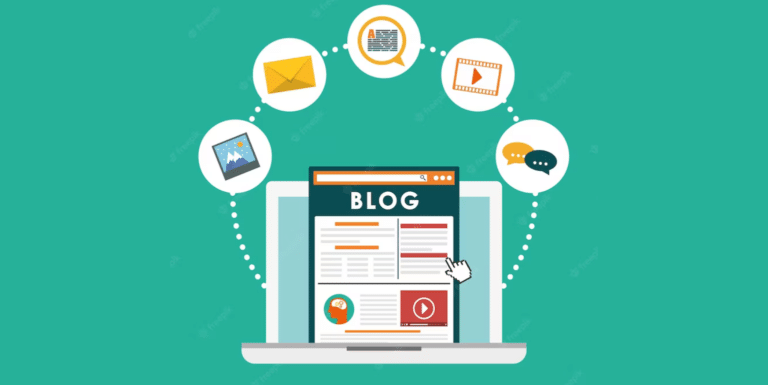Plagiarism Checker Tools: Importance in Creating Original Content in 2023
Plagiarism is a serious offense in the academic and professional world. It can damage your reputation and credibility, and even lead to legal consequences. Fortunately, there are tools available to help you check for plagiarism and ensure that your work is original. What is Plagiarism? Plagiarism is presenting someone else’s work as your own without…
Plagiarism is a serious offense in the academic and professional world. It can damage your reputation and credibility, and even lead to legal consequences. Fortunately, there are tools available to help you check for plagiarism and ensure that your work is original.
What is Plagiarism?

Plagiarism is presenting someone else’s work as your own without proper attribution or permission. It can take many forms, such as copying and pasting text from online sources, paraphrasing someone else’s work without giving them credit or submitting the same work to multiple sources without disclosing this fact. Plagiarism is considered unethical and can result in serious consequences, such as loss of credibility, legal action, and damage to one’s reputation. Using plagiarism checker tools ensures your work is original and properly cited.
Why is it Important to Use a Plagiarism Checker Tool?

Plagiarism is a serious problem that affects academic and professional communities. It is defined as using someone else’s work, ideas, or words without credit. Plagiarism can lead to serious consequences, including legal action, loss of credibility, loss of readership, loss of revenue, and even expulsion from an educational institution.
To avoid such consequences, plagiarism checker tools are essential. These tools are used to check the originality of content and ensure that the user is not unintentionally plagiarizing. The tools also help maintain intellectual property rights by identifying when content has been copied and when the original content has been used.
In today’s competitive environment, it is important to have original content that stands out. A business or individual’s readership, revenue, and credibility are at risk with duplicate content or content that has high similarity. Therefore, a plagiarism checker tool is a must-have to ensure that the content is original and draws readership and traffic.
Using plagiarism checker tools has several benefits:
- It helps prevent unintentional plagiarism, which can occur when a writer or student is unaware of the consequences of not crediting their sources.
- The tools help identify similar content sources, enabling users to rewrite and reference sources.
- Plagiarism checker tools are easy to use and provide quick results, saving time and effort.
Using different types of plagiarism checkers is important to get accurate and in-depth plagiarism reports. These tools include manual paraphrasing, exact matches, complete plagiarism, and verbatim plagiarism checkers. They help analyze multi-source, additional, and testing documents for similarities. It is important to note that language subgroups like the Romanic, Slavic, and Germanic languages should also be considered since they present unique challenges.
Plagiarism checker tools are vital in maintaining the integrity of intellectual property rights and ensuring original content. The competition in academia, media, and online platforms highlights the need for businesses, writers, and students to use them. Accidental plagiarism can be prevented, mistakes can be corrected, and credibility, readership, and revenue can be secured. So, always use a plagiarism checker tool before submitting any content.
Types of Plagiarism

Plagiarism is a serious issue that can result in a loss of credibility and legal consequences. It is important to understand the different types of plagiarism to avoid falling prey to this unethical practice.
Direct Copying and Exact Matching
When we hear the term plagiarism, the first thing that comes to our mind is direct copying. Direct copying, or exact matching, is when someone copies and pastes whole sentences or phrases from another source without rephrasing or citation. This is a serious offense in academic and professional writing, as it violates intellectual property rights and deprives the creator of the original content from receiving the credit they deserve.
Although direct copying and exact matching may seem similar, they differ. Direct copying refers to copying and pasting content without making any changes, while exact matching is replicating content from another source word-for-word. For instance, if a college student copies and pastes an entire academic article without proper citation, it could be considered direct copying, but if they reproduce a few sentences or paragraphs verbatim from the source, it would be classified as exact matching.
Direct copying and exact matching can severely affect intellectual property rights and original content creation. Not only does it harm the original creator’s work, but it can also lead to negative consequences for the person who copied it. Plagiarism can result in lost credibility, career damage, and legal issues, particularly if the plagiarism is substantial.
Direct copying and exact matching both constitute severe forms of plagiarism. Understanding the differences between the two is important as comprehending their implications on intellectual property rights and original content production. By using proper citation techniques and tools like plagiarism checkers, we can ensure that our writing is authentic and respects the original work of others.
Paraphrasing and Mosaic Writing
Paraphrasing and mosaic writing are two types of plagiarism that students and writers must avoid. While both involve using someone else’s ideas, there are differences between the two. Paraphrasing is when an author takes ideas from a source and restates them in their own words without proper citation. This activity can mislead readers into thinking that the ideas presented are original when, in fact, they are not. This practice goes against the standards of academic integrity.
Mosaic writing, on the other hand, is blending phrases or parts of a text from multiple sources to create a new work. The danger of mosaic writing is that it can be challenging to identify the sources and give credit to them appropriately. Thus, writers must be mindful not to present blended content as their original material and provide proper citations when using any content from other authors.
Both paraphrasing and mosaic writing can lead to plagiarism if proper citation is not given to the source material used. This poses ethical and legal concerns and can result in negative consequences for both the original creator and the author who plagiarizes. It can cause a loss of credibility and damage one’s reputation as a writer.
To avoid these unethical practices, writers must cite all sources appropriately. Successful paraphrasing requires careful attention to the original text, and the writer must show the reader that they have understood the source material and can restate it in their own words. Meanwhile, it is essential to use quotes when blending phrases or parts of a text from multiple sources and to provide works cited page and citation for all sources used in writing.
Paraphrasing and mosaic writing are types of plagiarism that writers must be aware of and avoid. These practices go against the standards of academic integrity and can lead to serious consequences. The proper citation must be provided for all sources used to ensure that authors are not committing plagiarism and that they have accurately represented the ideas of other authors.
Self-Plagiarism or Reusing Your Work
Self-plagiarism, or reusing one’s work, is an unethical and detrimental practice that can cause significant harm to one’s credibility and reputation as a writer. Some writers may feel tempted to reuse their previous work to save time or effort without realizing the severity of the consequences.
One major issue with self-plagiarism is that it is dishonest. Recycling old content can give off the impression that the author has put in less effort or is unwilling to invest the time required to produce original work. Additionally, reusing previously published work without acknowledging it as such undermines the trust between the writer and the reader by deceiving the latter into believing that they have read something new and original when, in fact, they haven’t.
To avoid self-plagiarism, writers should strive to generate fresh ideas and content, connecting to their previous works without crossing ethical boundaries. One way to do this is to analyze the previous work for strengths and weaknesses, exploring innovative approaches and methods to build upon, modify, or even dispute previous claims.
In academic writing, acknowledging previously published work is essential to maintain authenticity and credibility. Citations credit authors whose work has contributed to new research and allow future researchers to build on that work. By not citing previous work, authors risk appropriating someone else’s work, violating intellectual property or copyright laws, and potentially damaging their reputation.
To avoid self-plagiarism, writers should use plagiarism detection tools to identify instances in which they are reusing their work. For instance, plagiarism checkers can detect similarities in previously published works and highlight any copied phrases, parts, or entire paragraphs. To avoid accidental self-plagiarism, authors should consider rephrasing, summarizing, or paraphrasing information to present it in a new way.
Writers should understand the significance of original content and strive to create unique, innovative, and ethical work. By acknowledging previously published work and avoiding self-plagiarism, writers can maintain credibility, establish trust with readers, and build a strong reputation as responsible and professional authors.
Unintentional Plagiarism
Unintentional plagiarism, also known as accidental plagiarism, occurs when a writer uses someone else’s work without proper citation or attribution without realizing they have done so. These types of plagiarism are often the result of careless mistakes rather than deliberate attempts to deceive the reader.
Writers can unknowingly commit unintentional plagiarism for various reasons. One of the common reasons is using vague language that closely resembles the original text. Writers may also fail to cite their sources properly or rely too heavily on a single source for information, leading to accidental plagiarism. Additionally, writers unfamiliar with the guidelines for academic writing may not be aware that they are unwittingly committing plagiarism.
Examples of unintentional plagiarism in academic writing may include accidental paraphrasing, where the writer rephrases or summarizes another author’s ideas but fails to credit the source. They may also misquote a source or fail to properly distinguish between common knowledge and original ideas. For instance, assuming that a fact is common knowledge and does not require citation without verifying its validity can lead to unintentional plagiarism.
To avoid unintentional plagiarism, writers can take several steps. First, they should take careful notes from sources and record all relevant information about the source, such as the author, title, and publication date. Writers can also use quotation marks to identify direct quotes and cite all sources properly. Another way to avoid unintentional plagiarism is to use plagiarism detection tools to help writers identify any accidental plagiarism in their work.
Unintentional plagiarism is a serious concern that can damage a writer’s reputation and credibility. Writers can avoid unintentional plagiarism by taking steps to appropriately recognize and cite sources, utilizing plagiarism detection tools, and staying up-to-date on best practices for academic writing. By doing so, writers can ensure their work is original and ethically sound.
How Does a Plagiarism Checker Tool Work?

Plagiarism is a serious issue in academic writing and online content creation. With the increasing availability of content on the internet, it has become easy for writers to unintentionally commit plagiarism. Many writers use plagiarism checker tools to ensure their work is original and properly cited. This article will explore how plagiarism checker tools work and their importance in detecting and preventing plagiarism.
Step 1: Uploading Text for Evaluation
Users must first access the user interface using a plagiarism checker tool. The interface usually includes an option for users to copy and paste text or upload a file for evaluation. Users should select the most convenient option for them.
Once the text has been uploaded, the user must select the type of evaluation needed. The most common options include single-source documents, multi-source documents, and checks of documents across language subgroups. Single-source documents refer to text from one source, while multi-source documents refer to multiple sources. Users may also specify the language subgroup for the evaluation, such as Romani, Slavic, or Germanic languages.
In some cases, additional or testing documents may be needed for accurate evaluation. These additional documents may include sources from the same topic or field, articles per language, or foreign language translations. By uploading these documents, users can increase the accuracy of the plagiarism checker tool’s results.
By carefully selecting the type of evaluation and providing all necessary documents, users can ensure that plagiarism checker tools provide an accurate and reliable report on the percentage of plagiarism detected in their work.
Step 2: Comparing to Online Sources, Academic Articles, and Scientific Papers
One of the most crucial aspects of using a plagiarism checker tool is the ability to compare the uploaded text to a wide range of sources. Checking against these sources is important to ensure the text’s originality and avoid accidental plagiarism or copyright infringement.
Plagiarism checker tools are designed to scan and compare the uploaded text against various sources, including online sources, academic articles, and scientific papers. They are capable of detecting forms of plagiarism such as verbatim plagiarism, manual paraphrase plagiarism, and even translation plagiarism.
The tool calculates the level of similarity between the uploaded text and the sources it has scanned. This is done by comparing the text at the sentence and word level, and the result is usually expressed as a percentage of similarity. It is important to note that a certain percentage of similarity does not necessarily indicate plagiarism, as some level of similarity with sources may be expected in academic writing.
By scanning the uploaded text against various sources, including online sources, academic articles, and scientific papers, plagiarism checker tools provide a comprehensive and accurate plagiarism report that helps users improve their content’s originality and avoid unintentional plagiarism.
Step 3: Generating a Report with a Percentage of Similarity and Exact Matches
A detailed report is generated once the plagiarism checker tool compares the uploaded text to various sources. This report includes important information such as the percentage of similarity and the number of exact matches found during the scanning process.
The percentage of similarity is usually expressed as a numeric value that indicates the proportion of text that matches existing sources. This percentage can range from 0 to 100, with higher percentages indicating higher levels of potential plagiarism.
The report may also list the specific sources where similarities were detected. This information is useful for identifying where the text may have been copied from and can be used to further investigate potential cases of plagiarism.
In addition to identifying instances of plagiarism, the report may also indicate the extent of plagiarism detected. This can help distinguish between accidental plagiarism and more deliberate attempts to copy content without proper attribution.
It is important to interpret the results of the plagiarism checker carefully, as false positives can sometimes occur. A false positive is when the tool detects similarities between the uploaded text and other sources, but these similarities are not instances of plagiarism. This can happen, for example, when both the uploaded text and the source contain common phrases or quotes.
Generating a report with the percentage of similarity and exact matches found by the plagiarism checker tool is a crucial step in identifying potential cases of plagiarism. This information can help you investigate further and take appropriate action to ensure that sources are properly cited and credited.
Step 4: Referencing Original Sources
Citing sources and crediting the original authors are essential to academic writing. Referencing sources is important for several reasons. Firstly, it helps to avoid plagiarism. Plagiarism is considered a serious academic offense where one presents someone else’s work as their own. Proper citation and referencing show that you have conducted extensive research and have given credit to the original authors. It also demonstrates your academic honesty and credibility.
Secondly, referencing supports the argument presented in your work. Citing relevant sources strengthens your argument and demonstrates that you have read widely on the subject. It also provides your readers with the opportunity to explore further on the topic.
Different citation styles are commonly used depending on the discipline and academic institution. The most popular citation styles include APA, MLA, and Chicago. The American Psychological Association (APA) style is commonly used in social sciences. Modern Language Association (MLA) style is most commonly used in humanities, including literature, languages, and cultural studies. The Chicago or Turabian styles are used in publishing, history, and other humanities. Each citation style has specific guidelines on how to format and reference sources. It is important to familiarize oneself with these guidelines to avoid incorrect citations, which can lead to plagiarism.
To reduce the burden of referencing, reference software such as Zotero or EndNote can be used. These software programs help keep track of sources and easily generate a reference list in various citation styles. They automatically format the references and citations, making it easier for the writer to focus on content creation.
Referencing sources is a crucial element of academic writing. Proper citation and referencing prevent plagiarism and give credibility to your work. Familiarizing oneself with citation styles and using reference software can make this task easier while saving time and effort in the long run.
Benefits of a Plagiarism Checker Tool

Plagiarism checker tools are becoming increasingly popular as a necessary tool for anyone involved in content creation. Whether you’re a student, writer, or business owner, ensuring your content is original and not copied from other sources is vital. A plagiarism checker tool can help you by comparing your text to thousands of online sources to identify potential plagiarism issues. This article will discuss the key benefits of using a plagiarism checker tool and how it can help you improve your content’s originality and credibility.
Ensuring Original Content and Intellectual Property Rights Are Protected
Ensuring our content is original, and our intellectual property rights are protected is crucial. Not only is plagiarism unethical, but it can also have serious legal consequences and negatively impact a writer’s reputation. To avoid plagiarism, a plagiarism checker tool can be extremely helpful.
Plagiarism checker tools scan written materials for matches with other sources found online or in a database. These tools can identify exact matches or similarities in phrasing, allowing writers to revise their work to ensure that it is original and properly attributed to the sources. This can help prevent accidental plagiarism and protect intellectual property rights.
In addition to using a plagiarism checker tool, referencing and citing sources is another key way to protect intellectual property rights. Properly citing sources shows respect for the original creator’s work and helps build trust with readers by providing evidence of thorough research and expert knowledge.
Ensuring that content is original has many benefits beyond just protecting intellectual property. It can also help establish a writer’s credibility and avoid penalties for copyright infringement. Creating original content can also help set the writer apart from competitors using similar content.
Protecting intellectual property rights by ensuring original content is crucial for writers who want to maintain their credibility and uphold ethical standards. Utilizing a plagiarism checker tool and correctly citing sources are important steps in achieving this goal.
Preventing Copyright Infringement in Educational Institutions
Educational institutions are often hotspots for plagiarism, where students may be unaware of the seriousness of committing plagiarism. Plagiarism can have severe consequences, including penalties for copyright infringement and a loss of credibility for the plagiarized individual. To prevent these issues, educational institutions can integrate plagiarism checker tools into their programs, educating students about recognizing and avoiding plagiarism.
Plagiarism checker tools effectively detect plagiarism as they allow the comparison of student work across a wide range of online sources, scientific papers, and academic articles. They can generate detailed similarity reports highlighting the plagiarism percentage and identify exact matches and forms of plagiarism, such as verbatim and paraphrased. These features make plagiarism checker tools indispensable in detecting plagiarism and helping students understand how to create original content.
Plagiarism checker tools can also provide helpful feedback on how to improve originality. For instance, they can suggest alternative phrasing for sentences that are found to be plagiarized and offer recommendations for credible sources to which students can refer, thereby taking the educational element of the checker tool beyond mere detection.

By integrating plagiarism checker tools into their programs, educational institutions can help students to develop a better understanding of the importance of originality while at the same time preventing instances of copyright infringement. These tools help teach students about plagiarism’s ethical and legal dimensions and support the development of critical writing and research skills. Ensuring originality in student work is crucial to building a culture of innovation that rewards originality, credibility, and respect for intellectual property.
FAQs
Here are so,e frequently asked questions regarding plagiarism checker tools:
How accurate are plagiarism checker tools?
Plagiarism checker tools are considered highly accurate in detecting instances of plagiarism. However, accuracy can vary depending on the tool used and the sources compared. It is recommended that users check the credibility and reputation of the tool before relying solely on its results.
Can I use multiple plagiarism checker tools for the same document?
Yes, using more than one plagiarism checker tool is a good idea as it can help to double-check the results and increase accuracy. However, it is important to remember that different tools may use different algorithms, databases, and detection methods, which may lead to variations in results.
Are there any free plagiarism checker tools available?
Yes, there are many free plagiarism checker tools available online. Some popular options include SmallSEOTools, DupliChecker, and Quetext. However, it is important to check the accuracy and reliability of the tool before use.
How do I know which plagiarism checker tool best suits my needs?
Before choosing a plagiarism checker tool, consider the type of document you need to check, the most relevant sources, and the most important features. Some tools may be better suited for academic papers, while others may be more focused on web content. It is recommended that users compare and contrast different tools to determine which one is the most suitable for their needs.
Can plagiarism checker tools detect both intentional and unintentional plagiarism?
Yes, plagiarism checker tools are designed to detect both intentional and unintentional plagiarism. Unintentional plagiarism can be caused by careless mistakes, such as forgetting to cite a source or improper paraphrasing. However, whether the plagiarism is intentional or unintentional, the consequences can be severe, including potential academic sanctions and legal repercussions.
Conclusion
Plagiarism is a serious offense that hinders the creation of original and authentic content. Using a plagiarism checker tool is essential in ensuring that a piece of work is free from plagiarism and has referenced sources instead. We have discussed the different types of plagiarism: accidental, intentional, complete, verbatim, translation, and manual paraphrase.
To sum up, plagiarism is a severe issue that can be avoided by referencing sources and using a plagiarism checker tool. It is recommended for everyone, including college students, researchers, and content writers, to use these essential tools to ensure that they produce original and authentic content. Remember, using a plagiarism checker tool and reference sources is the key to producing quality content.
A website like Web Analyx offers a certainly effective plagiarism tool that provides all of these features. This website developed its plagiarism checker tool with the help of experts and professionals, and thus, you can expect that all of your content needs and plagiarism concerns are adequately addressed. Also, Web Analyx offers several more tools that can surely help you when it comes to online marketing and increasing your website revenue.










